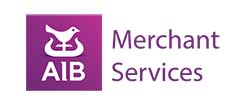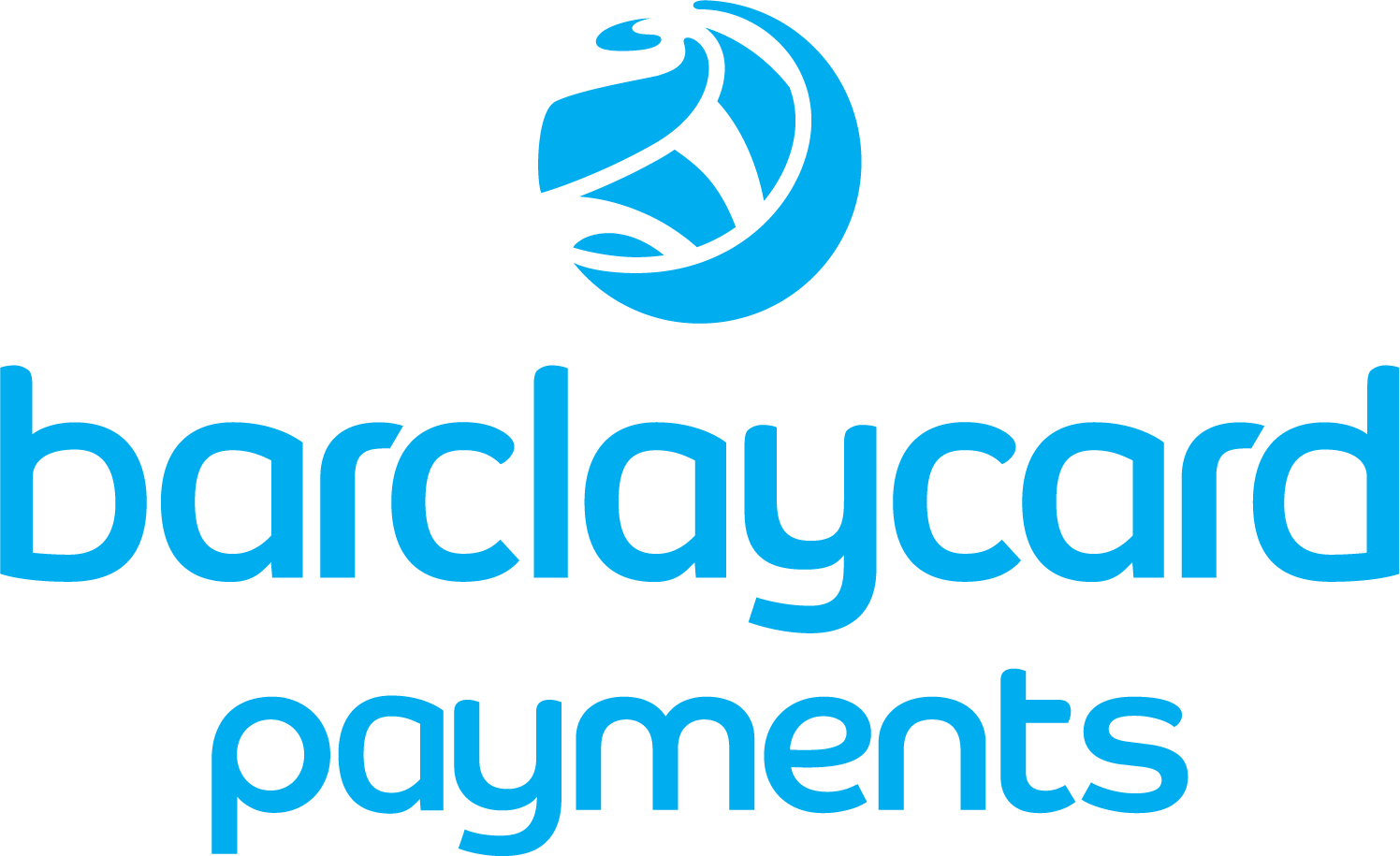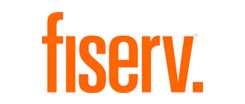Compare Card Payment providers the Easy way
- Direct access to the best rates from the UK leading providers
- One enquiry – all the information you need
- Avoid Lead Generation websites
- We don’t sell your data to anyone
- Rates from 0.26%
- Minimise your card payment processing fees





We're rated Excellent on
Understanding Payment Options: A Guide to Choosing the Best Method
In today’s fast-paced digital world, small businesses need to recognize how the way we pay for goods and services has evolved significantly. Paying online offers enhanced security and privacy, with services like Apple Pay protecting personal data by not storing card numbers or sharing them with merchants. From traditional cash payments to cutting-edge mobile payment systems, consumers and businesses alike have a wide array of payment methods at their disposal. However, with so many options available, it can be challenging for small businesses to determine which payment method is best suited to their needs. This guide will explore the various payment options, their benefits, and how to choose the right one for your transactions.
What Are Payment Methods?
Payment methods refer to the various ways individuals and businesses can complete transactions for goods and services. These methods can be broadly categorized into traditional payment methods, such as cash and checks, and digital payment methods, including credit cards, debit cards, and mobile payments. Additionally, alternative payment methods like cryptocurrencies and online payment platforms have gained traction in recent years. The choice of payment method often depends on the payer’s preferences, the payee’s acceptance, and the specific requirements of the transaction. For instance, while some may prefer the simplicity of cash payments, others might opt for the convenience and security of mobile payments or debit cards.
The Evolution of Payment Methods
Traditional Payment Methods
Historically, cash payments were the most common form of transaction. Cash is tangible, widely accepted, and doesn’t require any additional infrastructure. However, carrying large amounts of cash can be inconvenient and risky, potentially affecting cash flow. Additionally, cash transactions lack the security built into digital payment systems, making them more susceptible to theft and fraud.
Cheques were another traditional payment method, often used for larger transactions or recurring payments. However, cheques are becoming increasingly obsolete due to their slow processing times and the rise of digital alternatives.
The Rise of Digital Payments
The advent of digital payments has revolutionized the way we handle money. Debit cards and credit cards are now ubiquitous, offering a convenient and secure way to pay for goods and services. These cards are issued by a bank or card issuer and are linked to a bank account, allowing for seamless transactions both online and in-person.
Digital payments also include mobile payment systems like Apple Pay and Google Pay, which allow users to make payments using their smartphones. These methods are not only convenient but also offer enhanced security features, such as tokenization, which protects card details from being exposed during transactions. Additionally, customers can authenticate transactions using biometric methods such as fingerprint or facial recognition. However, not all retailers accept Apple Pay, as some locations may require specific apps or support for certain types of mobile phones.
Alternative Payment Methods
In addition to traditional and digital payment methods, there are several alternative payment methods that have gained popularity in recent years. These include:
- E-wallets : Digital wallets like PayPal and Skrill allow users to store their card details and make payments without having to enter their information each time.
- Cryptocurrencies : Bitcoin and other cryptocurrencies offer a decentralized payment system that operates independently of traditional banking hours and institutions.
- Buy Now, Pay Later (BNPL) : Services like Klarna and Afterpay allow consumers to make purchases and pay for them in installments, often without incurring interest.
Parties Involved in a Payment
A typical payment transaction involves two primary parties: the payer and the payee. The payer is the individual or business making the payment, while the payee is the recipient of the payment. In many cases, additional parties such as a bank or card issuer play a crucial role in facilitating the transaction. For example, when a payer uses a credit card, the bank or card issuer verifies the transaction and ensures that instant bank payments are transferred to the payee’s account. This process helps to acknowledge payment and maintain the integrity of the transaction. For UK businesses looking for the cheapest online payment systems, options such as PayPal Business, Stripe, and Square are popular due to their competitive transaction fees and ease of setup. These platforms offer transparent pricing and are widely used by small and medium businesses in the UK. Always compare the fee structures to select the most cost-effective solution for your business needs.
Factors to Consider When Choosing a Payment Method
When selecting a payment method, there are several factors to consider:
Security
Security is paramount when it comes to handling money. Look for payment methods that offer a convenient way to enjoy robust fraud protection and security features. For example, mobile payment systems like Apple Pay and Google Pay use advanced encryption and tokenization to protect your card details.
Transaction Costs
Different payment methods come with a range of options and varying transaction costs. Credit cards, for instance, may charge higher fees compared to debit cards. Additionally, some merchants may pass on these costs to the customer in the form of surcharges. Be sure to consider these costs when choosing a payment method.
Convenience
Convenience is another important factor for customer satisfaction. Mobile payment systems and digital wallets offer the convenience of making payments with just a few taps on your smartphone. On the other hand, cash payments require you to carry physical currency, which can be inconvenient for larger transactions.
Acceptance
Not all payment methods are widely accepted. While debit and credit cards are generally accepted at most merchants, alternative payment methods like cryptocurrencies or an online payment option may have limited acceptance. Ensure that the payment method you choose is accepted by the parties involved in the transaction.
Recurring Payments
If you have recurring payments, such as subscriptions or bills, it’s important to choose a payment method that supports automatic payments for your business growth. This ensures that your payments are made on time, avoiding late payment fees. Failing to make timely payments can result in a late payment fee, which serves as a surcharge for delayed payments and impacts the overall payment process.
Transaction History
Keeping track of your transactions is easier with digital payment methods. Most banks and card issuers provide detailed transaction histories, making it simple to monitor your spending and manage your finances, and the key difference is the level of detail and accessibility offered by these digital platforms.
Adding and Managing Payment Methods
Adding and managing payment methods is a critical aspect of conducting online transactions efficiently. Payees can accept a variety of payment methods, including credit cards, debit cards, and local payment methods like Apple Pay and Google Pay. To add a payment method, payees typically follow these steps:
- Navigate to the payment settings or dashboard. Click on the “Add Payment Method” button. Choose the desired payment method, such as a credit card or debit card. Enter the necessary information, such as the card number and expiration date. Stripe makes it easy for businesses to support multiple online payment methods by offering options to accept credit cards, debit cards, and other digital wallets directly from their dashboard. This flexibility allows businesses to accommodate a wider range of customer preferences and streamline the checkout process.
- Click on the “Add Payment Method” button.
- Choose the desired payment method, such as a credit card or debit card.
- Enter the necessary information, such as the card number and expiration date.
- Verify the payment method and save the changes.
Managing payment methods involves editing or deleting existing methods, setting default payment methods, and tracking transaction history. This flexibility allows payees to streamline their payment processes and ensure they can accept payments in the most convenient and secure manner possible.
Popular Payment Methods in the UK
Debit and Credit Cards
Debit and credit cards are among the most widely accepted payment methods in the UK, particularly for UK shoppers. They offer a convenient and secure way to make payments, both online and in-person. Most cards come with fraud protection, ensuring that you’re not held liable for unauthorized transactions.
Mobile Payments
Mobile payment systems like Apple Pay and Google Pay are gaining traction in the UK, offering a convenient mobile banking app experience for users. Legal requirements may mandate the acceptance of certain payment methods up to a prescribed limit. These systems allow users to make payments using
Payment Processing and Market Trends
Payment processing is the mechanism through which transactions between payers and payees are verified and settled. This process involves various stakeholders, including banks, card issuers, and online payment providers that act as payment processors. The payment processing market is dynamic, with new payment methods and technologies continually emerging. Some current trends in payment processing include:
- Contactless Payments : Methods like Apple Pay and Google Pay are gaining popularity due to their convenience and enhanced security features.
- Mobile Payments : Mobile wallets and peer-to-peer payment apps are becoming more widespread, offering ease of use and accessibility.
- Cryptocurrencies : Digital currencies like Bitcoin and Ethereum are being explored as alternative payment methods, valued for their decentralized nature and security.
- Recurring Payments : Subscription-based services are on the rise, providing convenience and cost-effectiveness for both payers and payees.
- Banking Hours : The relevance of traditional banking hours is diminishing with the advent of online banking and mobile payments, allowing transactions to be made at any time.
The payment processing market is expected to continue evolving, with new technologies and payment methods emerging to meet the changing needs of both payers and payees. This ongoing innovation ensures that the payment system remains efficient, secure, and adaptable to future demands.
What is your favorite online payment method and why?
My favorite online payment method is PayPal due to its widespread acceptance, user-friendly interface, and robust security features. It allows quick transactions and the ability to send money internationally with ease. Additionally, PayPal offers buyer protection, ensuring a safe shopping experience for consumers everywhere.
Understanding Payment Options: A Guide to Choosing the Best Method
In today’s fast-paced digital world, small businesses need to recognize how the way we pay for goods and services has evolved significantly. Paying online offers enhanced security and privacy, with services like Apple Pay protecting personal data by not storing card numbers or sharing them with merchants. From traditional cash payments to cutting-edge mobile payment systems, consumers and businesses alike have a wide array of payment methods at their disposal. However, with so many options available, it can be challenging for small businesses to determine which payment method is best suited to their needs. This guide will explore the various payment options, their benefits, and how to choose the right one for your transactions.
What Are Payment Methods?
Payment methods refer to the various ways individuals and businesses can complete transactions for goods and services. These methods can be broadly categorized into traditional payment methods, such as cash and checks, and digital payment methods, including credit cards, debit cards, and mobile payments. Additionally, alternative payment methods like cryptocurrencies and online payment platforms have gained traction in recent years. The choice of payment method often depends on the payer’s preferences, the payee’s acceptance, and the specific requirements of the transaction. For instance, while some may prefer the simplicity of cash payments, others might opt for the convenience and security of mobile payments or debit cards.
The Evolution of Payment Methods
Traditional Payment Methods
Historically, cash payments were the most common form of transaction. Cash is tangible, widely accepted, and doesn’t require any additional infrastructure. However, carrying large amounts of cash can be inconvenient and risky, potentially affecting cash flow. Additionally, cash transactions lack the security built into digital payment systems, making them more susceptible to theft and fraud.
Cheques were another traditional payment method, often used for larger transactions or recurring payments. However, cheques are becoming increasingly obsolete due to their slow processing times and the rise of digital alternatives.
The Rise of Digital Payments
The advent of digital payments has revolutionized the way we handle money. Debit cards and credit cards are now ubiquitous, offering a convenient and secure way to pay for goods and services. These cards are issued by a bank or card issuer and are linked to a bank account, allowing for seamless transactions both online and in-person.
Digital payments also include mobile payment systems like Apple Pay and Google Pay, which allow users to make payments using their smartphones. These methods are not only convenient but also offer enhanced security features, such as tokenization, which protects card details from being exposed during transactions. Additionally, customers can authenticate transactions using biometric methods such as fingerprint or facial recognition. However, not all retailers accept Apple Pay, as some locations may require specific apps or support for certain types of mobile phones.
Alternative Payment Methods
In addition to traditional and digital payment methods, there are several alternative payment methods that have gained popularity in recent years. These include:
- E-wallets : Digital wallets like PayPal and Skrill allow users to store their card details and make payments without having to enter their information each time.
- Cryptocurrencies : Bitcoin and other cryptocurrencies offer a decentralized payment system that operates independently of traditional banking hours and institutions.
- Buy Now, Pay Later (BNPL) : Services like Klarna and Afterpay allow consumers to make purchases and pay for them in installments, often without incurring interest.
Parties Involved in a Payment
A typical payment transaction involves two primary parties: the payer and the payee. The payer is the individual or business making the payment, while the payee is the recipient of the payment. In many cases, additional parties such as a bank or card issuer play a crucial role in facilitating the transaction. For example, when a payer uses a credit card, the bank or card issuer verifies the transaction and ensures that instant bank payments are transferred to the payee’s account. This process helps to acknowledge payment and maintain the integrity of the transaction. For UK businesses looking for the cheapest online payment systems, options such as PayPal Business, Stripe, and Square are popular due to their competitive transaction fees and ease of setup. These platforms offer transparent pricing and are widely used by small and medium businesses in the UK. Always compare the fee structures to select the most cost-effective solution for your business needs.
Factors to Consider When Choosing a Payment Method
When selecting a payment method, there are several factors to consider:
Security
Security is paramount when it comes to handling money. Look for payment methods that offer a convenient way to enjoy robust fraud protection and security features. For example, mobile payment systems like Apple Pay and Google Pay use advanced encryption and tokenization to protect your card details.
Transaction Costs
Different payment methods come with a range of options and varying transaction costs. Credit cards, for instance, may charge higher fees compared to debit cards. Additionally, some merchants may pass on these costs to the customer in the form of surcharges. Be sure to consider these costs when choosing a payment method.
Convenience
Convenience is another important factor for customer satisfaction. Mobile payment systems and digital wallets offer the convenience of making payments with just a few taps on your smartphone. On the other hand, cash payments require you to carry physical currency, which can be inconvenient for larger transactions.
Acceptance
Not all payment methods are widely accepted. While debit and credit cards are generally accepted at most merchants, alternative payment methods like cryptocurrencies or an online payment option may have limited acceptance. Ensure that the payment method you choose is accepted by the parties involved in the transaction.
Recurring Payments
If you have recurring payments, such as subscriptions or bills, it’s important to choose a payment method that supports automatic payments for your business growth. This ensures that your payments are made on time, avoiding late payment fees. Failing to make timely payments can result in a late payment fee, which serves as a surcharge for delayed payments and impacts the overall payment process.
Transaction History
Keeping track of your transactions is easier with digital payment methods. Most banks and card issuers provide detailed transaction histories, making it simple to monitor your spending and manage your finances, and the key difference is the level of detail and accessibility offered by these digital platforms.
Adding and Managing Payment Methods
Adding and managing payment methods is a critical aspect of conducting online transactions efficiently. Payees can accept a variety of payment methods, including credit cards, debit cards, and local payment methods like Apple Pay and Google Pay. To add a payment method, payees typically follow these steps:
- Navigate to the payment settings or dashboard. Click on the “Add Payment Method” button. Choose the desired payment method, such as a credit card or debit card. Enter the necessary information, such as the card number and expiration date. Stripe makes it easy for businesses to support multiple online payment methods by offering options to accept credit cards, debit cards, and other digital wallets directly from their dashboard. This flexibility allows businesses to accommodate a wider range of customer preferences and streamline the checkout process.
- Click on the “Add Payment Method” button.
- Choose the desired payment method, such as a credit card or debit card.
- Enter the necessary information, such as the card number and expiration date.
- Verify the payment method and save the changes.
Managing payment methods involves editing or deleting existing methods, setting default payment methods, and tracking transaction history. This flexibility allows payees to streamline their payment processes and ensure they can accept payments in the most convenient and secure manner possible.
Popular Payment Methods in the UK
Debit and Credit Cards
Debit and credit cards are among the most widely accepted payment methods in the UK, particularly for UK shoppers. They offer a convenient and secure way to make payments, both online and in-person. Most cards come with fraud protection, ensuring that you’re not held liable for unauthorized transactions.
Mobile Payments
Mobile payment systems like Apple Pay and Google Pay are gaining traction in the UK, offering a convenient mobile banking app experience for users. Legal requirements may mandate the acceptance of certain payment methods up to a prescribed limit. These systems allow users to make payments using
Payment Processing and Market Trends
Payment processing is the mechanism through which transactions between payers and payees are verified and settled. This process involves various stakeholders, including banks, card issuers, and online payment providers that act as payment processors. The payment processing market is dynamic, with new payment methods and technologies continually emerging. Some current trends in payment processing include:
- Contactless Payments : Methods like Apple Pay and Google Pay are gaining popularity due to their convenience and enhanced security features.
- Mobile Payments : Mobile wallets and peer-to-peer payment apps are becoming more widespread, offering ease of use and accessibility.
- Cryptocurrencies : Digital currencies like Bitcoin and Ethereum are being explored as alternative payment methods, valued for their decentralized nature and security.
- Recurring Payments : Subscription-based services are on the rise, providing convenience and cost-effectiveness for both payers and payees.
- Banking Hours : The relevance of traditional banking hours is diminishing with the advent of online banking and mobile payments, allowing transactions to be made at any time.
The payment processing market is expected to continue evolving, with new technologies and payment methods emerging to meet the changing needs of both payers and payees. This ongoing innovation ensures that the payment system remains efficient, secure, and adaptable to future demands.
What is your favorite online payment method and why?
My favorite online payment method is PayPal due to its widespread acceptance, user-friendly interface, and robust security features. It allows quick transactions and the ability to send money internationally with ease. Additionally, PayPal offers buyer protection, ensuring a safe shopping experience for consumers everywhere.
